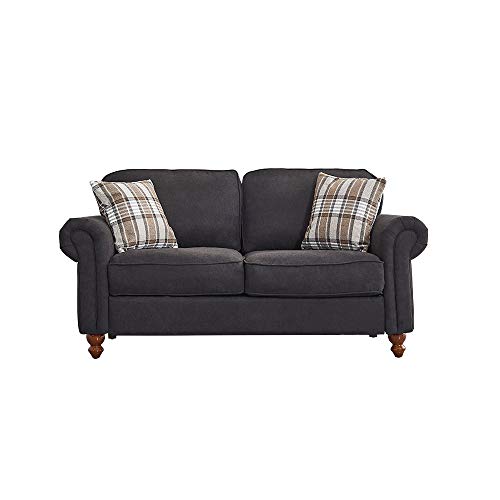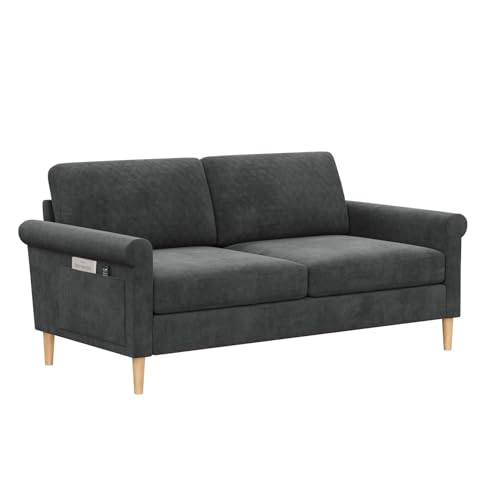Guide To 2 Seater Leather And Fabric Sofa: The Intermediate Guide Towa…
Bret
2024.11.19 04:25
205
0
본문
 Choosing Between a 2 seater sofa fabric 2 seater fabric settee Leather And Fabric Sofa (Images.Google.Td)
Choosing Between a 2 seater sofa fabric 2 seater fabric settee Leather And Fabric Sofa (Images.Google.Td)If you're looking for a new sofa 2 seater fabric it isn't easy to decide between fabric or leather. This is especially true for those who aren't a professional in furniture.
If you have kids or live in a tiny space, a leather option could be the best option for you. It is easy to maintain and looks gorgeous in most homes.
Comfort
A 2 seater sofa fabric is the focal element of the majority of living spaces and is a significant purchase. You want a sofa that can be used for many hours, that looks great and stands the test of time. Deciding between leather or fabric can be confusing However, it is essential to consider your needs, lifestyle and budget before making a choice.
Leather is a premium material that is soft and luxurious and is elegant in a home. It is durable and stain-resistant, it is safe for pets and children, and will last for a long time when properly cared for. It is expensive initially and may require regular conditioning to prevent cracks or peeling.
Fabric sofas are available in a wide range of styles, colors and fabrics. They can be an affordable alternative to leather ones. They are also more comfortable, more welcoming and can be "broken into" right from the beginning. They may be more susceptible to dust mites and pet hairs and require more frequent cleaning. There are hypoallergenic fabrics and new technology available.
The durability of a sofa made from fabric will depend on the quality of the fabric However, the majority of fabrics can last up to 15 years if properly taken care of. Regular vacuuming and deep cleaning will aid in keeping the fabric clean and free of odours and spills. Like leather, they are prone to sagging and flattening over time. In addition, a lot of couches made of fabric have been treated with chemicals to make them stain-resistant and flame retardant. They can release volatile organic chemicals that may cause allergic reactions and impact indoor air quality.
Durability
We often choose sofas with fabrics that are extremely durable, particularly if you have pets or children. You don't want to pay much upfront and then end up feeling remorseful about buying after the first spill or claws that are crowbarred. You don't want a cheap item that can't withstand everyday use.
Leather, on the other hand, is extremely resilient and has an incredible strength for tears. It can last up four times longer than fabric and is naturally resistant to cracks, fading, and flaking. It is also able to be conditioned to restore its natural oils and look like new.
Fabrics are more affordable and come in a variety of patterns, colors and textures that can be tailored to any style of interior. They are also cleaner than leather and can withstand a decent amount of wear and tear, but they do tend to be more prone to moisture and can be susceptible to fading in time.
Microfiber is a good option for durability and can be found in a variety of colors, but it's not as strong as genuine leather and might not withstand scratches. It's still a great choice for families because of its ability to resist spills and stains. It's also simple to clean using a damp cloth.
Suede is more difficult to clean and repair than leather. It's shape can change and feel rough if it is not regularly conditioned. It's also a thin substance, so it may not be as durable as sheepskin leather or cowhide.
Allergens
The material your sofa is made of can have a major impact on your allergies, so it's important to know the different ways to treat. Fabrics are known to hold allergens such as dust mites, pet dander and mold that can trigger symptoms of allergies like rhinitis, hay fever, asthma and eczema. This is because these fabrics create the perfect environment to allow them to grow.
However, leather, unlike other materials, does not accumulate the allergens and offers a constant level of comfort, regardless of the season. It can also cause allergic dermatitis in those with contact dermatitis, or are sensitive to the chemicals used in tanning. Using vegetable-tanned leather and maintaining an active skincare routine are essential for mitigating skin reactions.
Sofas made of fabric and leather have a high level of durability, however the material you choose will determine how well it holds up over time. A good quality material will withstand fade or sagging and will be able to withstand spills or body oils as well as daily use. Many modern fabric couches come with stain-resistant treatment to make cleaning easier.
While you might not be able completely prevent an allergic reaction from the leather in your sofa, it is possible to avoid allergens by having a lint roll close by and regularly cleaning your living space. This will help in reducing the amount of pet hair, dirt and dust mites that gather on your sofa. If you're still suffering from allergies, you can consider replacing your sofa with a more hypoallergenic one. For instance, a couch made of synthetic leather or vinyl is less likely to trap pet dander or dust mites. It can also make it easier to breathe.
Scratches
It is important to consider how much wear you can anticipate the leather sofa to endure. How long a sofa will last is contingent on the finish, colour and leather quality. Also, you must ensure that it is durable enough to withstand spillages and other accidents. You can accomplish this by searching for a sofa with a solid hardwood frame and high-density foam cushions.
Leather can be scratched by various reasons such as stretching it, marking territory or in the process of reliving tension. Scratches can vary in severity and range from small surface scratches to large punctures and cuts. Small scratches can be fixed by applying a leather conditioner to the affected area. This will help restore the equilibrium of moisture and oil in the leather, preventing it from drying out and cracking. The severity of the damage will determine the kind of treatment required.
It is recommended for cat owners to trim their cat's nails on a regular basis. This will stop them from scratching on the couch. You can also redirect your cat's scratching habits by giving them alternative scratching surfaces like sisal rope or cardboard. Another option is using a pet-safe furniture polish which can be applied with an abrasive cloth to the damaged area.
It is important to wash your leather couch frequently and keep it away from direct sunlight and heat, because they dry it out. This can cause cracks in the leather. Repairing this is often difficult and requires an overhaul. It is also a good idea to use a leather conditioner to keep the leather supple.
Smell
A leather sofa is likely to have a different smell than fabric. It's because leather is porous, and absorbs odors such as smoke, body odors or food. The good news is that odors usually dissipate with time and especially when you use a non-toxic, fragrance-free cleaner.
If the smell is strong, it could mean that something is wrong with the foam. This is typically caused by chemical off-gassing resulting from petroleum-based polyurethane. If this is a concern you should look for couches manufactured with CertiPUR US certified latex or natural latex.
A second way to identify faux leather is to look for texture or bumps on the back of the sofa. This is a clear indication that it's bonded instead of genuine top grain leather. You can also do an inspection by tilting the couch to its side to check if you see any exposed upholstery backing. If you are able to smell it, it's probably a synthetic material, such as polyurethane or polyester. These materials will have a distinct scent than leather.
While a leather couch is more likely to be prone to absorbing smells, the most effective way to avoid this is to clean regularly your sofa. This will keep it looking and smelling great, as well preventing it from becoming brittle or cracked over the years. Start by vacuuming and dusting your couch before wiping it down with a dry cloth and baking soda (a excellent natural method to remove odors). This should be done every two weeks to remove dust and dirt. Apply leather conditioner to maintain the texture and color of your sofa.


댓글목록 0